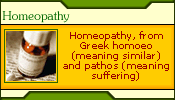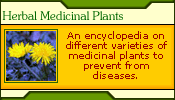|
The human body contains 30 to 35 mg. of manganese, widely distributed
throughout the tissues. It is found in the liver , pancreas, kidney,
pituitary glands.
This mineral helps nourish the nerves and brain and aids in the
coordination of nerve impulses and muscular actions. It helps eliminate
fatigue and reduces nervous irritability. Manganese is found in
citrus fruits, the outer covering of nuts, grains, in the green
leaves of edible plants, fish and raw egg yolk. No official daily
allowance of manganese has been established, but 2.5 to 7 mg. is
generally accepted to be the average adult requirement. A deficiency
of this mineral can lead to dizziness, poor elasticity in the muscles,
confused thinking and poor memory.
Manganese is one of those humble trace elements so often overlooked,
yet essential to your health.
Manganese is required for
It enables the body to utilize vitamin C, B1, biotin as well as
choline. It is used in the manufacture of fat, sex hormones and
breast milk in females.
It is thought to also help neutralize free radicals as well as
being of assistance in preventing diabetes and needed for normal
nerve function.
Manganese is also indicated in stimulating growth of the connective
tissue and is also thought to be of importance in brain functioning.
Deficiency of manganese
Deficiencies are rare but would include poor bone growth, problems
with the disks between the vertebrae, birth defects, and problems
with blood glucose levels and reduced fertility. Serious deficiency
in children can result in paralysis, deafness and blindness.
Manganese is not easily absorbed but since small amounts are needed
deficiencies are not very general.
Dosage
The dosage is the Recommended Daily Allowance (RDA), but be aware
that this dosage is the minimum that you require per day, to ward
off serious deficiency of this particular nutrient. In the therapeutic
use of this nutrient, the dosage is usually increased considerably,
but the toxicity level must be kept in mind.
In the case of microelements, such as trace elements, the amounts
are very small, yet they are still important and the indicated dosage
is 2 milligrams per day.
Toxicity and symptoms of high intake
Toxicity by diet is rare. Miners who are exposed to high levels
of manganese, which can also be inhaled, can cause "manganese
madness".
Best used with
It is best taken with vitamins B1, E, calcium as well as phosphorous.
When more may be required
A higher intake may be necessary when breast-feeding or when taking
a calcium or phosphorous supplement.
Enemy of element
Manganese is lost in milling and absorption is also negatively
influenced in the presence of large amounts of calcium, phosphorous,
zinc, cobalt and soy protein.
Manganese is depleted in the soil by extensive use of chemical
fertilizers or too much lime, and food grown in such soil will have
a low manganese content.
Food sources of manganese
It is found in nuts, avocados, eggs, brown rice, spices, whole
grains, leafy greens as well as tea and coffee.
|


















